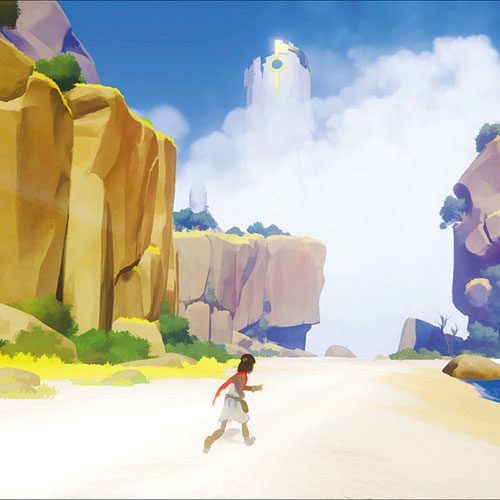Game Review: RiMe

By Morgan Shaver | Shacknews.com (TNS)
RiMe
Platforms: Windows PC, PlayStation 4, Xbox One, Nintendo Switch
ESRB Rating: E, for Everyone
Mode: Single-player
Genre: Puzzle
Publishers: Grey Box and Six Foot
Let me preface this review by stating that RiME isn’t for everyone. It’s a slow, solemn puzzle platformer that requires a lot of patience. If you aren’t a fan of the genre, you won’t be able to extract the full experience that the game has to offer. Additionally, among the top questions asked in relation to RiME is whether or not it’s worth purchasing on the Nintendo Switch. My quick answer is yes, but I want to stress the importance of separating the two entities. RiME wasn’t a game built exclusively for the Nintendo Switch, despite graphical comparisons to The Legend of Zelda: Breath of the Wild. RiME plays like a passion project, a creative landscape pulled straight from a dream.
When you first load up the game, you notice just how gorgeous RiME is to look at. From the shimmering waters, to the breathtaking day/night cycle, right down to the ivory white towers that you climb and explore, RiME is a visual marvel. These mesmerizing vistas are given extra beauty as they’re backed by a powerful soundtrack (one of my favorite game soundtracks of 2017 thus far).
Arguably, the game’s two greatest strengths are its visuals and sound. Where it starts to fall short is the delivery of its message. With that, I want to dive a little deeper into its story; namely, what it got right and what it got wrong. Note: A full spoiler warning is in effect for the remainder of the review. If you haven’t completed RiME, I suggest returning once the game is completed. RiME story summary, final verdict (spoilers):
The story of RiME begins with a young boy stranded on a mysterious island. Now, I want to refrain from making too many comparisons to games like Journey or Abzu, but there are a few similarities worth mentioning to fans of this particular category of games who may be interested in picking up RiME. First, there’s no dialogue in RiME, as the boy is restricted to interacting with the world around him by shouting out to blue statues, or by humming to himself. Second, you’re given no instruction on how to solve the various puzzles you encounter. They’re kept purposefully simple so that you can figure them out on your own, while ensuring they’re cumbersome enough to make you feel like you accomplished something. Finally, the melancholy tone that seems to pervade the game from start to finish borrows a lot from anonymous characters found in Journey and Abzu. Even by the game’s ending, you don’t know much about the boy and his life before finding himself stranded on the island. Furthermore, RiME wastes no time introducing you to the mysterious figure in the red cloak whom the boy chases throughout the game. It’s in these moments that you get the feeling that the boy has lost something (or someone) that was close to him.











